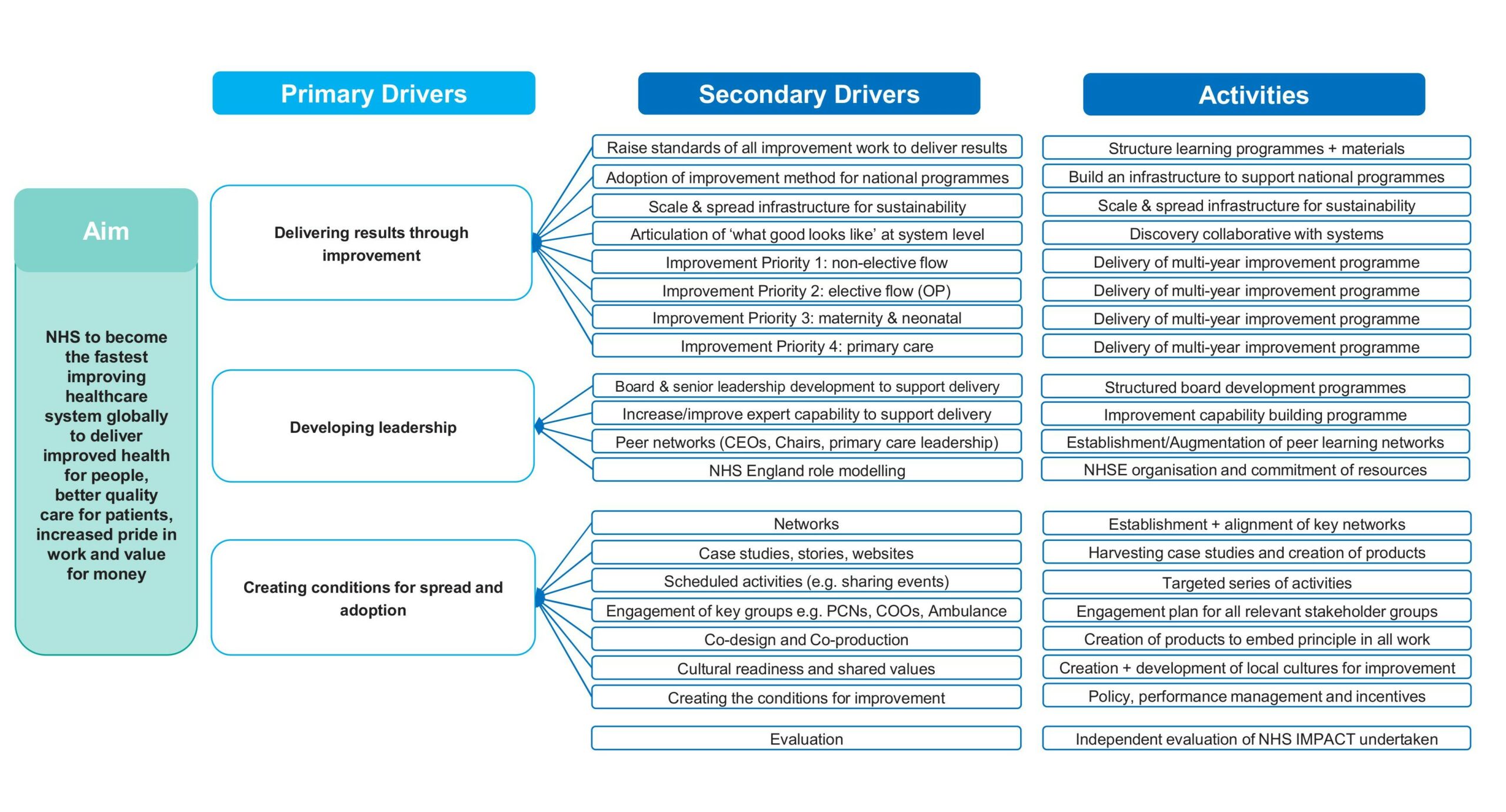NHS IMPACT Driver Diagram
Information about driver diagrams and how to utilise this improvement tool can be found on the East London NHS Foundation Trust website: Driver Diagrams – Quality Improvement – ELFT
Aligned to the five components of NHS IMPACT
Aim
The NHS to become the fastest improving healthcare system globally to deliver improved health for people, better quality care for patients, increased pride in work and value for money
Primary Drivers
- delivering results through improvement
- developing leadership
- creating conditions for spread and adoption
Secondary Drivers
- raise standards of all improvement work to deliver results
- adoption of improvement method for national programmes
- scale and spread infrastructure for sustainability
- articulation of ‘what good looks like’ at a system level
- improvement priority 1: non-elective flow
- improvement priority 2: elective flow
- improvement priority 3: maternity and neonatal
- improvement priority 4: primary care
- board and senior leadership development to support delivery
- increase/improve expert capability to support delivery
- peer networks (CEOs, Chairs, primary care leadership)
- NHS England role modelling
- networks
- case studies, stories, websites
- scheduled activities (e.g. sharing events)
- engagement of key groups e.g. PCNs, COOs, Ambulance
- co-design and coproduction
- cultural readiness and shared values
- creating the conditions for improvement
- evaluation
Activities
- structure learning programmes and materials
- build and infrastructure to support national programmes
- scale and spread infrastructure for sustainability
- discovery collaborative with systems
- delivery of multi-year improvement programme
- structured Board development programmes
- improvement capability building programme
- establishment/Augmentation of peer learning networks
- NHS England organisation and commitment of resources
- establishment and alignment of key networks
- harvesting case studies and creating of products
- targeted series of activities
- engagement plan for all relevant stakeholder groups
- creating of products to embed principle in all work
- creation and development of local cultures for improvement
- policy, performance management and incentives
- independent evaluation of NHS IMPACT undertaken

